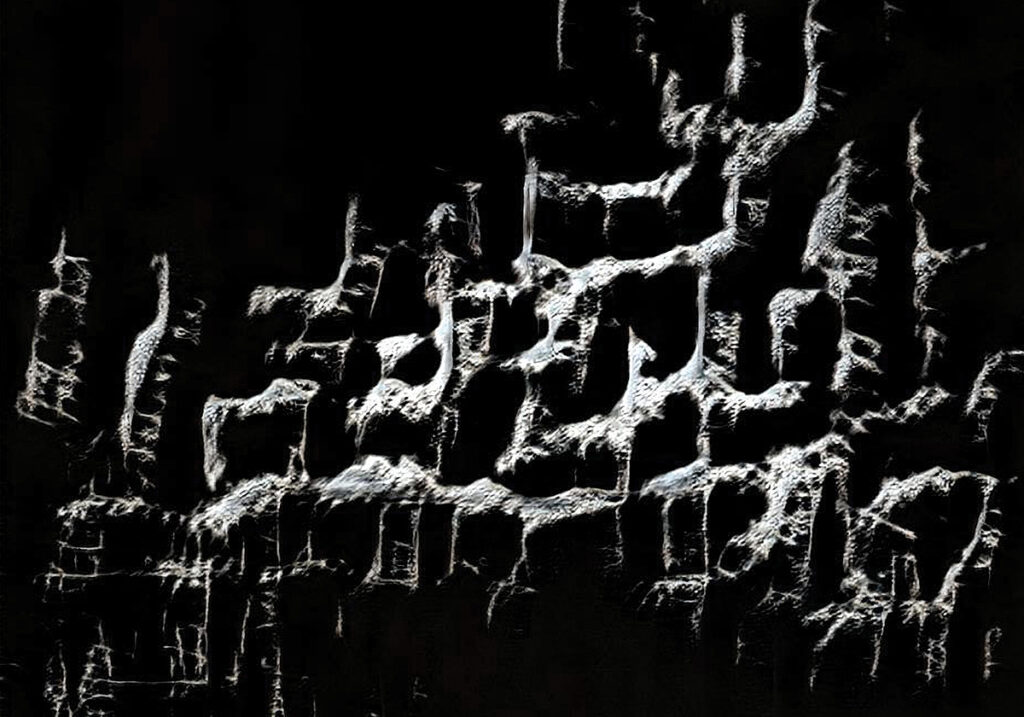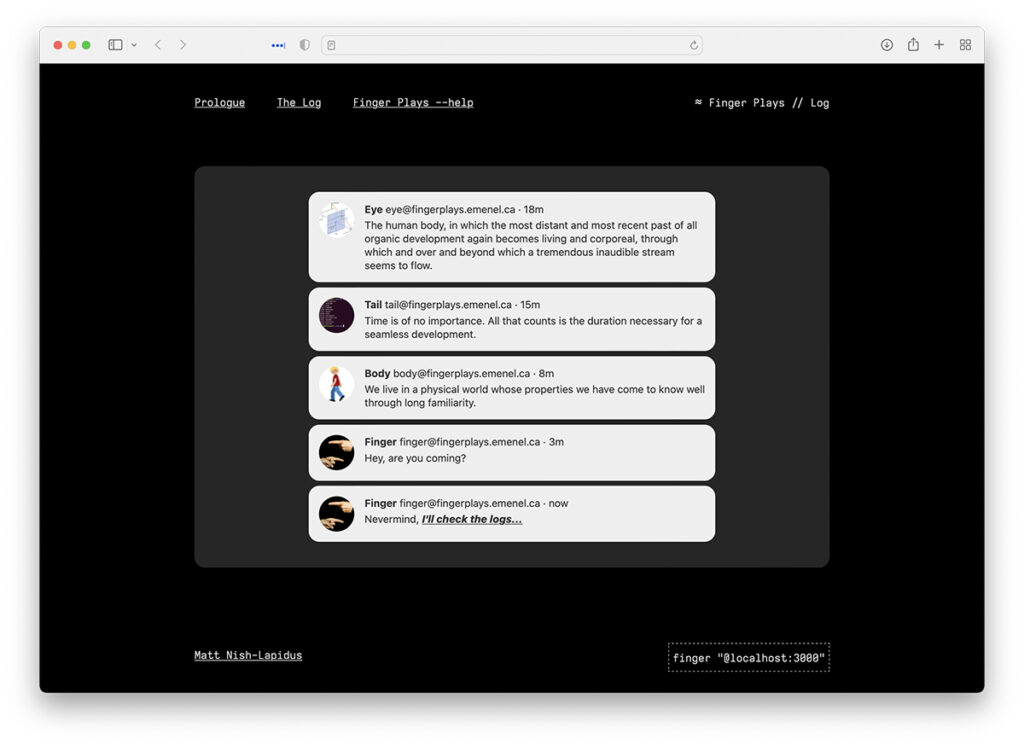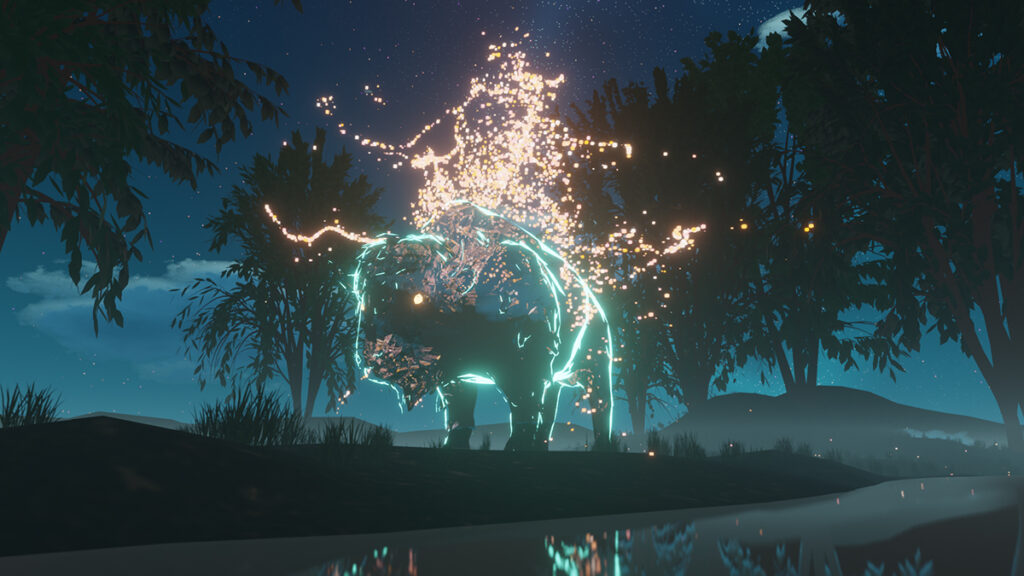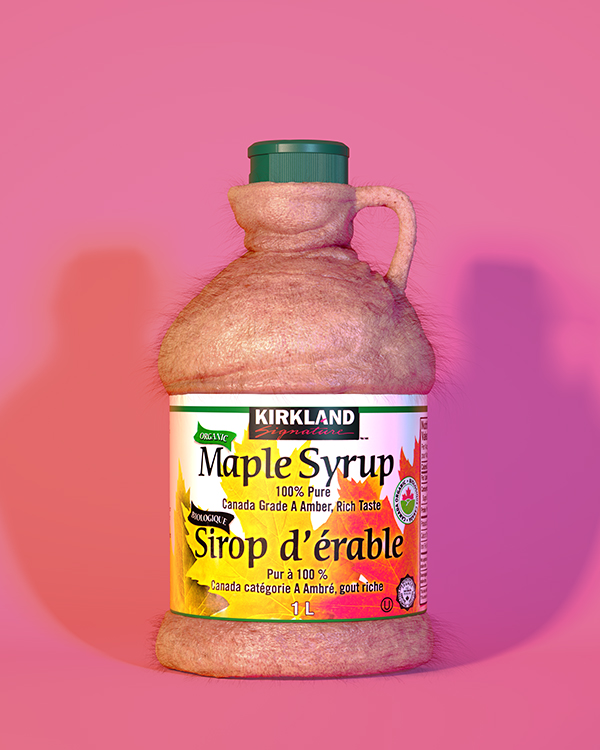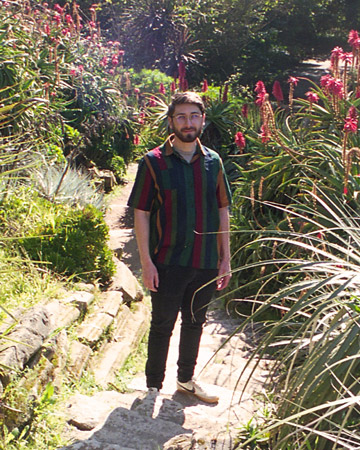Kasra Goodarznezhad
Evolving Maps: A Collective Memory, 2022
Video, 30 minutes, looped
Addressing the problematic power dynamics embedded in the field of cartography, Evolving Maps explores methodologies and new ways of recording information about physical space. Cassraa collects hand-drawn maps from the QTBIPOC community and uses an artificial intelligence model to transform them into expansive charts based on stories of hope, fear, alienation, displacement, exile, and joy. This method of counter-cartography places an emphasis on qualitative research to redefine the practice of mapping that has long excluded specific communities, while drawing attention to the challenges posed by AI and other algorithmic technologies.
Kasra Goodarznezhad is a Tehran-born, Toronto-based new media artist. He holds a BFA in Integrated Media from OCAD University and is the co-founder of two QTBIPOC collectives: Komite and Displaced. Reflecting on growing up in Iran and immigrating to Canada in 2015, Cassraa’s performance and installation practice deals with concepts of displacement, repression, memory, and censorship.
Matt Nish-Lapidus
Finger Plays, 2022
Website
Finger Plays uses the almost-forgotten social networking protocol, finger, to tell a story from beneath the surface of the internet. Visitors to the website are encouraged to add to an ever-growing log of text entries by ‘fingering’ usernames on the underlying server via the command line. The texts, algorithmically assembled from Silicon Valley launch announcements, science fiction novels, and the artist’s own writing, range from poetic to prophetic. The result is a constantly shifting and evolving narrative space that reveals what would otherwise be hidden, urging us to question the nature of networked reality.
Matt Nish-Lapidus is an artist, writer, and musician. He makes software, sounds, and texts probing the myth that computers need to be useful rather than beautiful. Matt’s interests lie in the poetics of computation and its proclivity to create meaningful relations through iteration and recombination, and how computation can be a source of identity and resistance.
Taylor McArthur
Ská Ská, 2022
Animation, 1:00
Inspired by the physical site of Winnipeg’s Exchange District where the Red River and Assiniboine River converge, Ská Ská thoughtfully explores what the river and the water it carries has meant to different Indigenous nations throughout history. McArthur creates a 3D digital universe of Indigenous cosmologies and symbols presented to her in dreams, including the bison which alludes to spiritual learning. The work honours the Nakoda people who once inhabited the area and traveled the rivers on canoe, celebrating the cultural resurgence of sacred teachings and knowledge sharing after years of oppression.
Taylor McArthur (Pogé hąská wašté wiyá/Hummingbird Woman) Nakoda, Pheasant Rump Nakota First Nation, Saskatchewan, is a digital artist working with 3D animation, game design, and video. Her digital works aim to create space for tactile interaction and human connection. Taylor’s practice is informed by Indigenous Futurism and seeks to situate her culture within modern and future world visions.
Wei Li
Vessels, 2022
Image series
Vessels is a digital series that features a set of mundane objects rendered with hyper-realistic human skin and body parts. Meant to activate the viewer’s visceral and emotional responses, the powerful images address the complexity of hybrid identity and offer commentary on notions of femininity, motherhood, diaspora, and popular culture. Li’s work combines digital aesthetics with traditional artmaking practices to express her own psychological experience of hybridity, while subtly echoing a broader reality.
Wei Li is an emerging Chinese Canadian artist. She holds a BFA from the University of Alberta and her work has been included in exhibitions across Canada and the United States. Wei’s dual cultural background challenges her to integrate different cultural perspectives into her work, drawing on the tensions inherent to her identity and informing a new hybrid artistic practice.
Zebv Diez
Ikot Ng Buhay, 2022
3 Videos, 2:00 each
Ikot Ng Buhay is a three-part work that explores Filipino identity through material objects, highlighting how items imported from the west tend to be valued over those from the global south. Each animation draws linkages between the cultural significance of objects with the longstanding legacy of over 300 years of colonial rule in the Philippines. By rendering consumer goods in a 3D environment, Diez decentralizes the colonial gaze, while expressing the nuances of preserving and presenting cultural identity in a contemporary context.
Zebv Diez is a Filipino Canadian artist based in Toronto. His work explores the intricacy of identity and precarious navigation of western spaces as an Asian Minority. Born in the Philippines, he draws on his experience of immigration to produce 3D environments which rely heavily on Asian aesthetics to convey the struggles of generational trauma, fetishization, assimilation, and othering.
Marcella Driver Moliner
H.O.M.E. (Hoarding Old Memory Eggs), 2022
Animation, 3:51
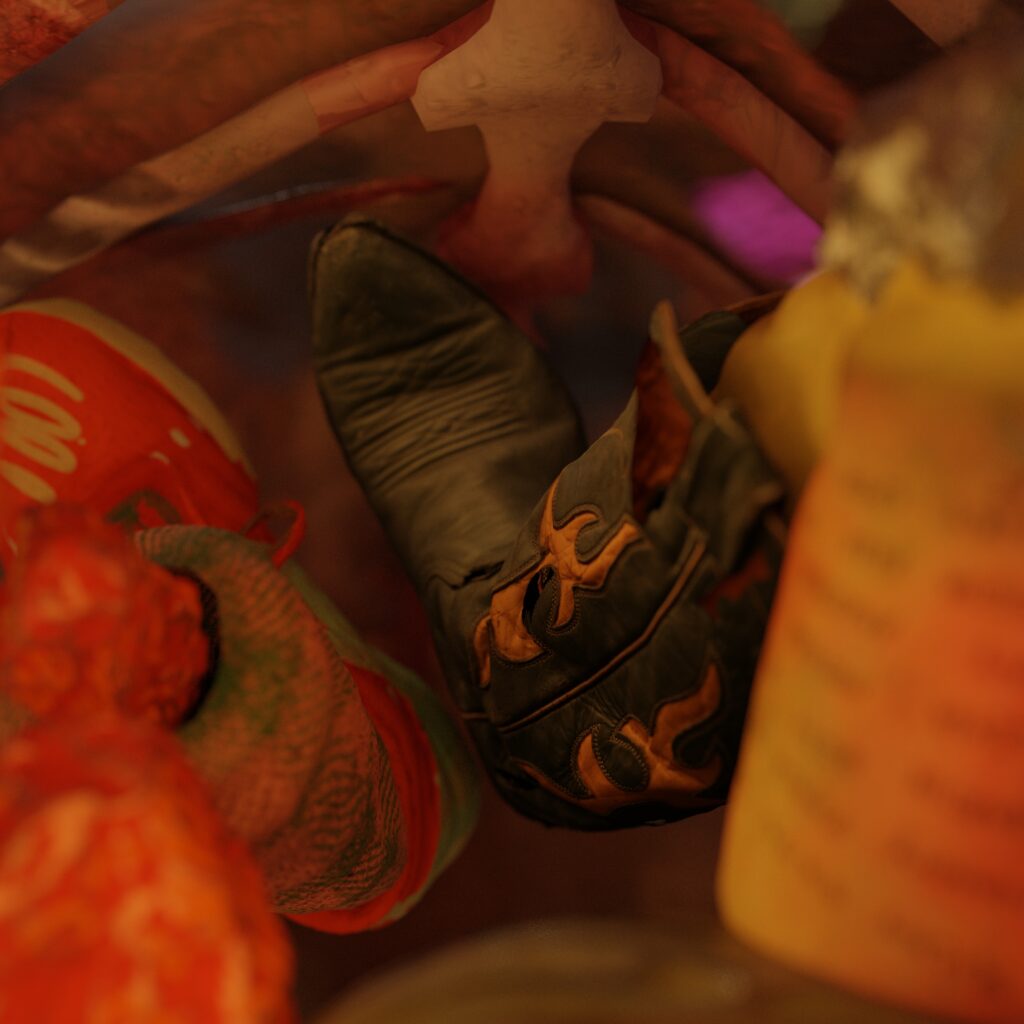
Timothy Yanick Hunter
True and Functional, 2022
Website

Jeremy Bailey
Jeremy Bailey is a Toronto-based self-proclaimed Famous New Media Artist. “Since the early noughties Bailey has ploughed a compelling, and often hilarious, road through the various developments of digital communications technologies.”(Morgan Quaintance, Rhizome) Bailey has performed and exhibited all over the world, from bathrooms in Buffalo to museums in Moscow.

Niki Little
A producer at the NFB’s North West Studio in Winnipeg, Niki Little is of Anishininew (Oji-Cree) and British ancestry, and originally from Garden Hill First Nation, Manitoba. From 2019 to 2021, she served as Artistic Director of imagineNATIVE, after leading the National Indigenous Media Arts Coalition. She is also one of the founding members of The Ephemerals collective and has worked for more than 12 years in the arts and culture sector, producing large-scale creations conceived from an Indigenous and community perspective.
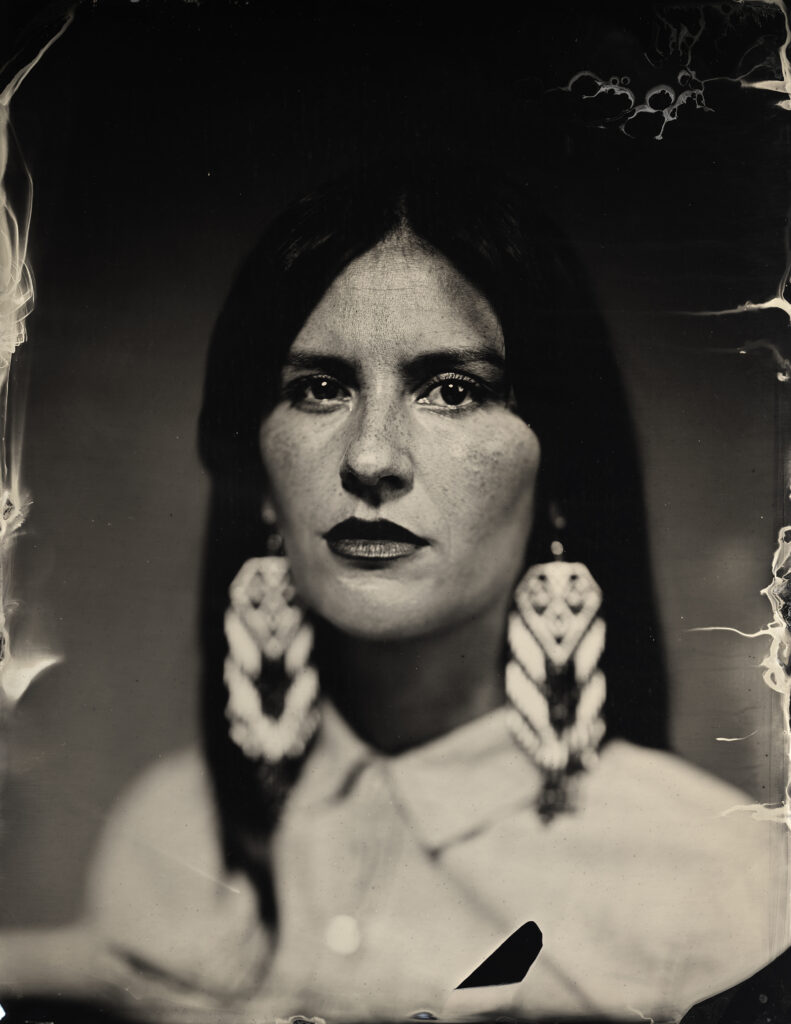
Photo: Kali Spitzer
Alvin Luong
Alvin Luong works with stories of human migration, land, and dialogues from diasporic working class communities to create artworks that reflect upon historical development and its intimate effects on the lives of people. Luong has shown and screened artworks at the Images Festival (Toronto), Boers-Li Gallery (Beijing), Gudskul (Jakarta), and The Polygon Gallery (Vancouver). The artist has held research and resident artist appointments at the Inside-Out Art Museum (Beijing), HB Station Contemporary Art Research Center (Guangzhou), the Art Gallery of Ontario (Toronto).
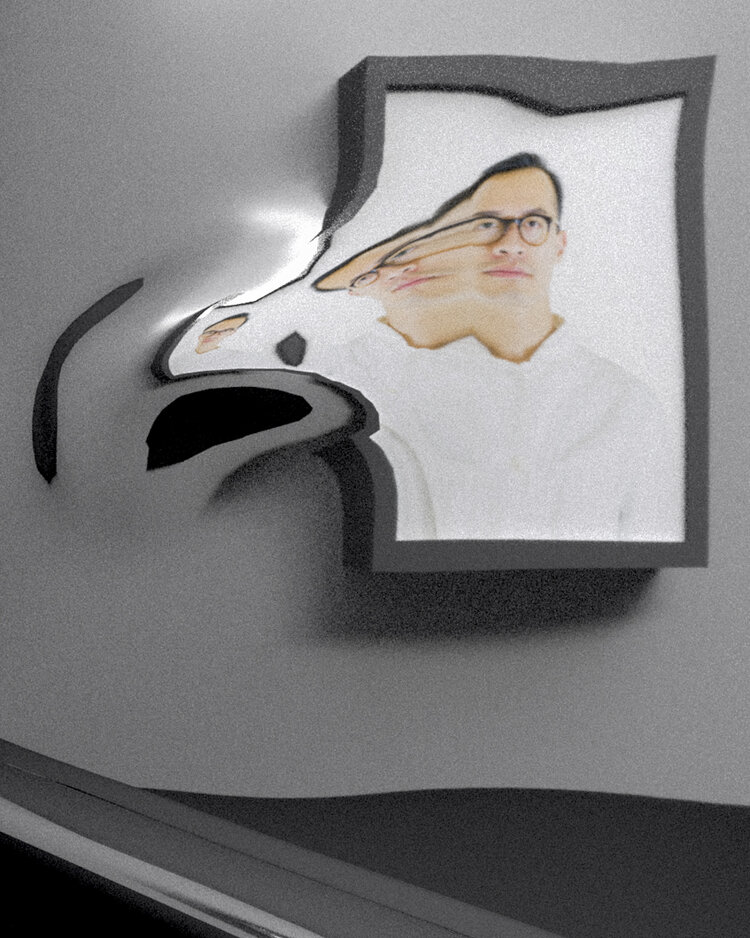
cyberia
cyberia is a generative artist exploring form through code. For the past two years he has committed to an iterative practice of daily code sketching in Processing and p5.js. In 2021, his digital artwork Sticker Pack was featured on 85 billboards in Tokyo, Japan through Neo Shibuya TV. In the past, he has collaborated on art projects at the Museum of Contemporary Art in Detroit and the Art Museum at the University of Toronto. He is based in Toronto and San Francisco.
